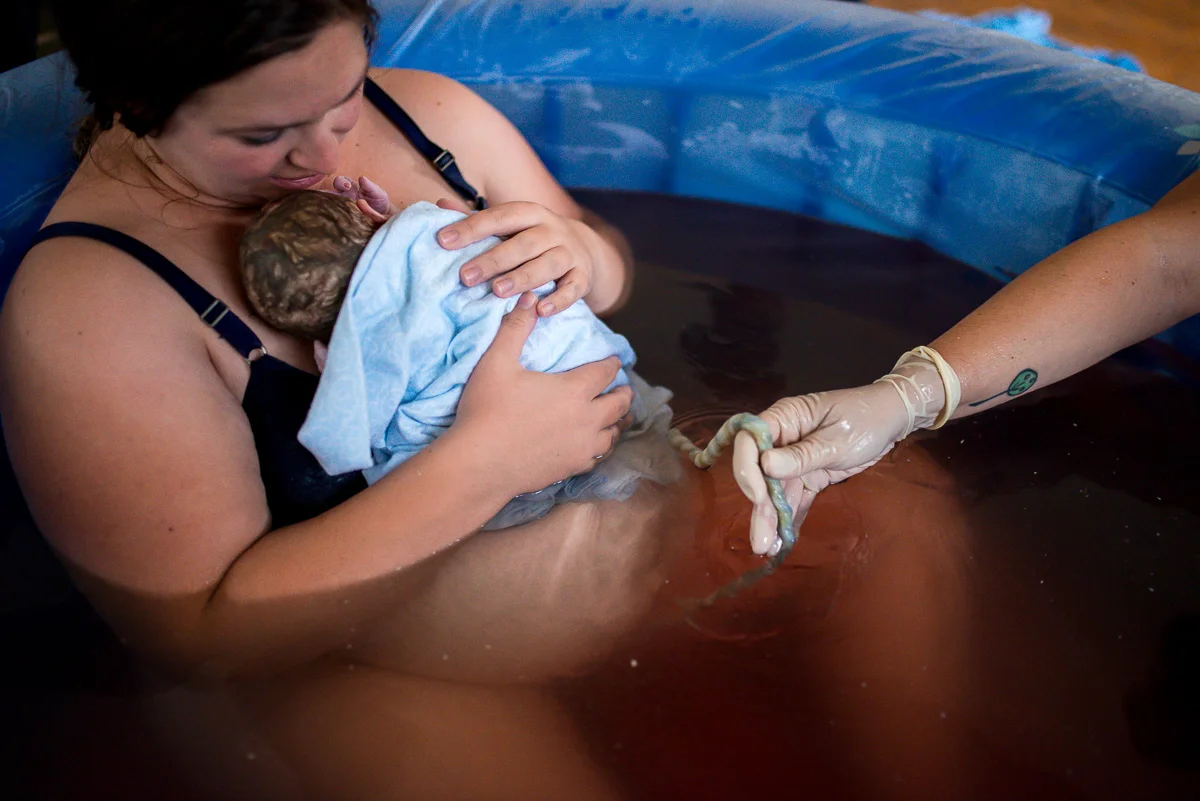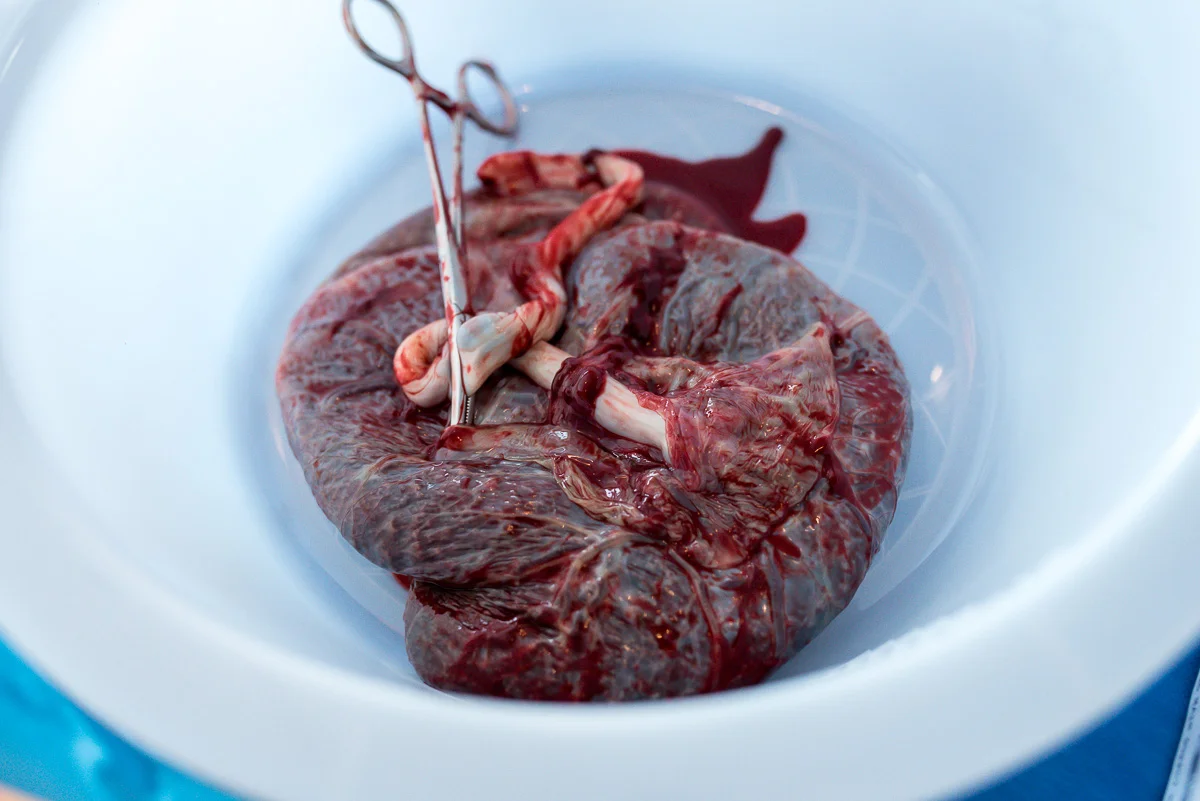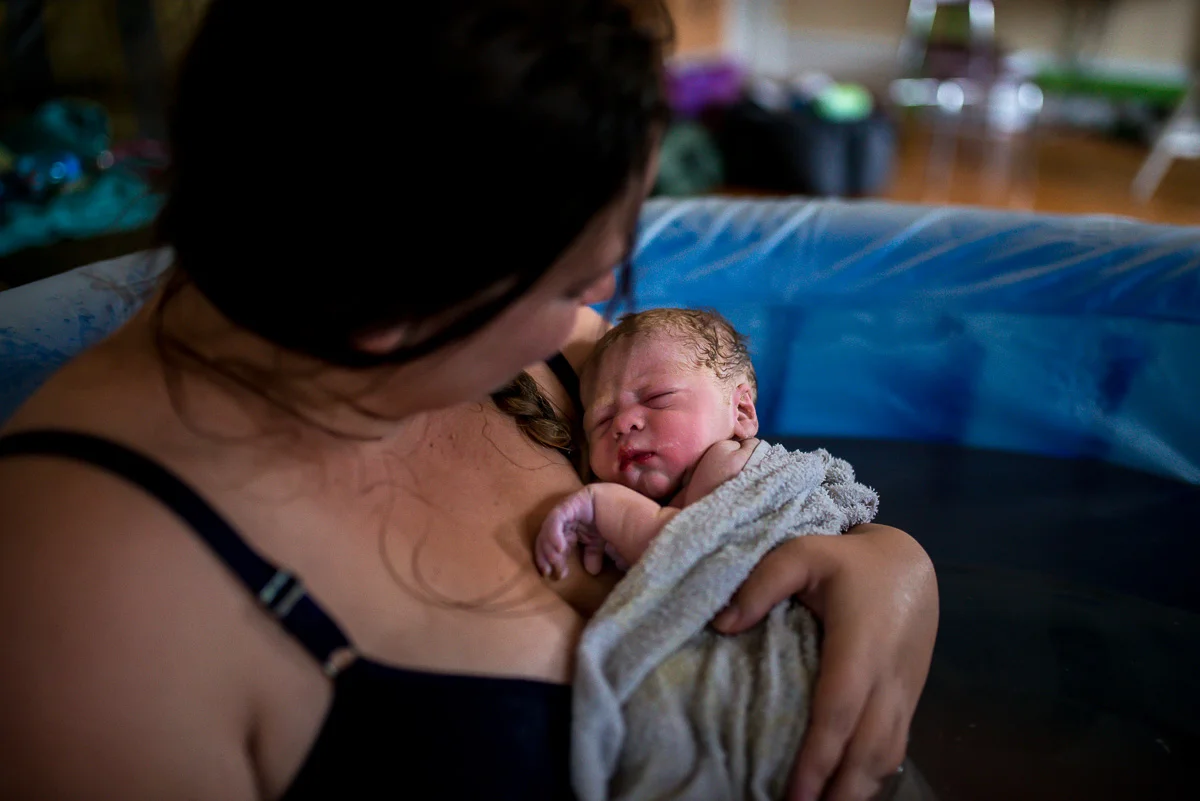The Third Stage of Labor | The Birth of the Placenta | Grand Rapids Doula and Birth Photographer
After her redemptive home water birth after two cesareans, this beautiful mother enjoyed the snuggles with her new baby as her body moved into the third stage of labor - the birth of the placenta. So here's some placenta education for ya! The placenta is incredible.
Case in Point: The placenta is an organ that women GROW along with their babies - which is freaking amazing. It's not every day you grow a new organ!
Anyway, the placenta is attached to the inside wall of the uterus and gives life, oxygen, and nourishment to the baby until they take their first breath after birth. Once the baby is born, the nutrient and oxygen-rich blood in the placenta makes its way through the umbilical cord into the baby's body. About one third of the baby's blood is still in the placenta at birth, so taking time to allow all that blood to make its way into the baby's body is important.
This is called Delayed Cord Clamping - the practice of waiting at least a few minutes, or until the cord stops pulsating, to clamp and cut the cord. In my humble opinion, it should be called “Normal Cord Clamping” and anything else should be called “Premature Cord Clamping.” :) As you can see in the image above, the midwife is feeling the cord to see if it is still pulsing - it hasn't stopped pulsing yet, so she waits to cut it. The cord still has a coiled blue/purple color, and is much more white/yellow when it has stopped pulsing.
Sometimes the cord is clamped and cut before the placenta is born, other times, the placenta is born first.
Once the baby is born, the uterus continues to lightly cramp which helps the placenta detach, and then it is born the same way the baby was (but it is MUCH smaller, squishier, and therefore easier to birth than the baby).
As the baby is born and the placenta starts to detach, there is some bleeding that occurs. This is totally normal because the detachment of placenta leaves an open wound on the inside of the uterus. Care providers watch the amount of bleeding and can help stop excessive bleeding (hemorrhage) with medications if necessary - this is true both in the hospital and at home births. In the birth pictured here, the level of bleeding was very normal - even though it has colored the water in the birth pool.
After the placenta is born, the uterus continues to contract. This causes the uterus to get smaller and smaller until it returns to the size of a grapefruit. When it shrinks down, the open blood vessels where the placenta detached are closed off and bleeding subsides significantly. The whole process is just incredible.
Because there is wound healing inside the uterus, both for women who gave birth vaginally or via cesarean, there is some period-like bleeding that continues for a number of weeks after birth. It is called lochia. The bleeding changes over time. It starts out looking like a red, clotty, heavy period. After a few days, it looks more pink and mucous-y/watery. It should more or less taper off over time and eventually is more like discharge. The general rule of thumb is that if bleeding increases at some point, it is probably an indication that you might be pushing yourself physically and should slow down a bit. Sometimes a walk, a car ride, or steps can increase bleeding. Your body is telling you to rest.
It is my strong recommendation to invest in quality postpartum products that will keep you comfortable and dry and help your body heal. My favorite options are cloth maternity pads of various sizes and for a disposable option, Natracare Maternity Pads. They are organic cotton (compostable) and are plastic, perfume, dye, and chlorine-free. Only the best for one of the most sensitive, absorbent parts of your bod! Some women wear giant pads or straight up DEPENDS, which also work great the first few days. I also highly recommend making icy pads with witch hazel and healing herbs for the first week postpartum. They feel like a dream. Along with good pads, PLEASEEEEEE get yourself some organic herbal sitz bath, a good perineal spray, and perineal balm to heal and soothe. If I was Oprah, I’d give every birthing woman in the world a Care Bundle with ALL THE THINGS (check out my shop and photo below to see what I’m talking about).
After reading this, hopefully you have a little better idea of what to expect about the amazing organ you’ve spent 9 months growing for your baby. You. Are. Amazing.





